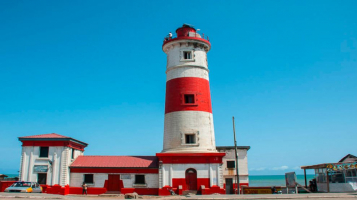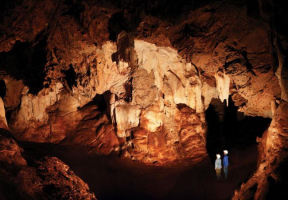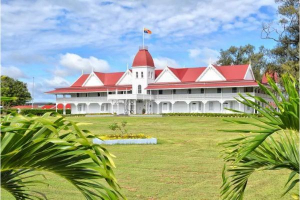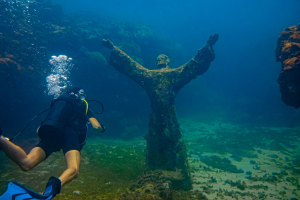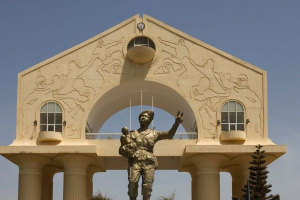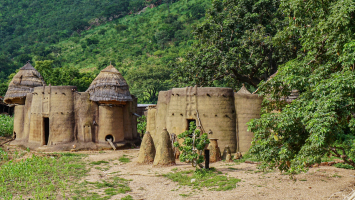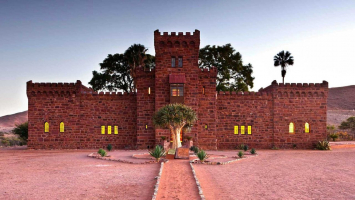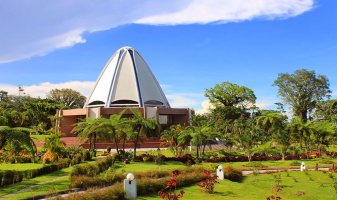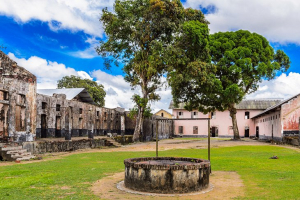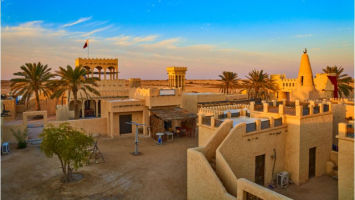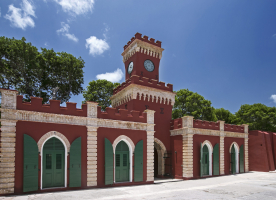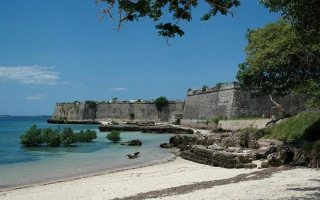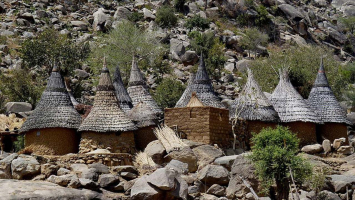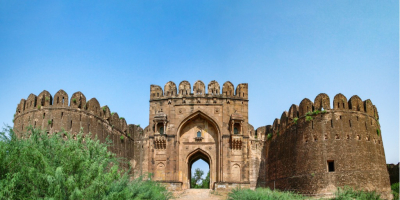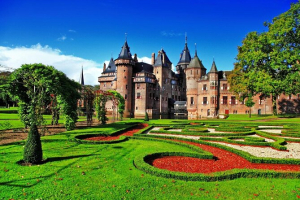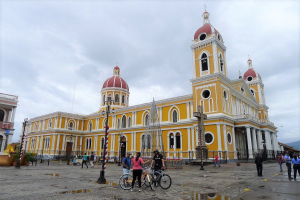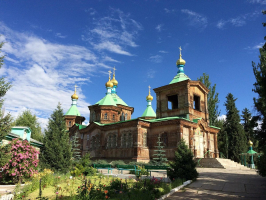Top 7 Most Famous Historical Sites in Aruba (Netherlands)
Aruba is the typical Caribbean island, complete with sun, water, and pristine white sand beaches. As you linger over a tropical cocktail or flutter serenely ... read more...underwater, where only the parrotfish are in a rush, time will slow to a peaceful crawl. These are the top 7 most famous historical sites in Aruba (Netherlands).
-
Only the 600-foot (180 m) cruise liners Bianca C. and Antilles are bigger shipwrecks in the Caribbean than Antilla. Antilla stands in up to 60 feet (18 meters) of water on its port side in Malmok Bay, Aruba, with a little portion of its starboard side exposed above water. Storm damage had split the ship in half amidships by 1953.
The wreck has been inhabited by corals and tube sponges, attracting lobsters, hawksbill sea turtles, and a variety of fish, including moray eels and blue tang. A big Atlantic goliath grouper was discovered in the front area in 2010. Antilla is a famous diving destination, especially for penetration diving. The wreck has continued to be broken up by storms, and some divers believe it is now unsafe to enter.
The Antilla Shipwreck is one of the Caribbean's largest shipwrecks and one of the most famous historical sites in Aruba. When Germany invaded Holland in 1940, the German cargo ship SS Antilla was purposely destroyed in Aruba. The 121-meter-long (400-foot-long) wreck is mainly intact and can be examined during an interesting dive. Snorkelers can get an amazing view of the wreck by hovering above it, while scuba divers can see the stern of the boat at 18 meters (60 feet) below the surface. Hundreds of tropical fish rush amongst the brilliant coral formations, sponges, and anemones that cover the wreck as you watch it from below.
Location: Opal 58, Noord, Aruba
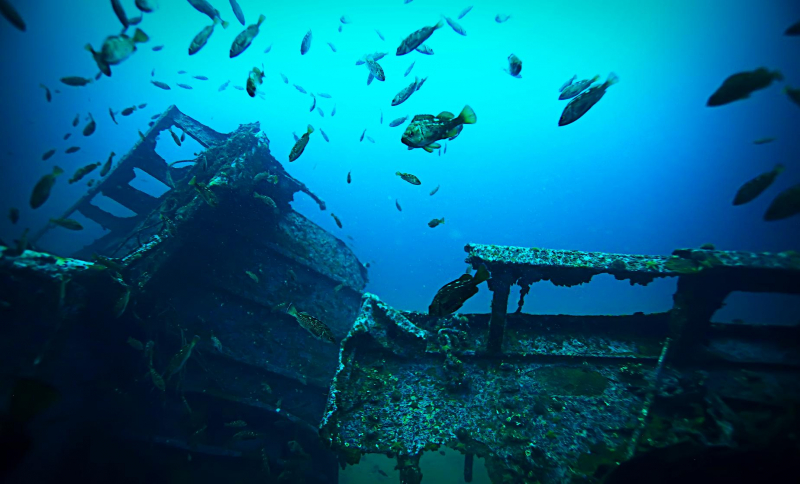
Photo: www.shoreexcursionsgroup.com 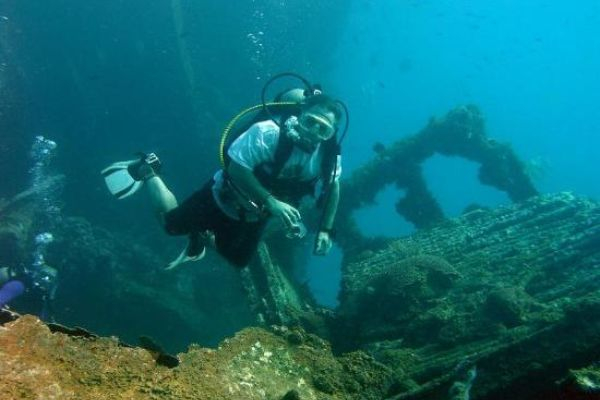
Photo: Tripadvisor -
The Jane Sea, the Debby II, and the Star Gerren are among the wrecks that have been sunk for the enjoyment of divers. With ships like this on the diving menu, Aruba's reputation for wreck diving is well-deserved.
In 1988, the Jane Sea, a 170-foot English cargo, sank to create an artificial reef. With the deck at 18 meters and the propeller at 27 meters, the ship is upright on the ocean floor. Large schools of tropical fish, including barracudas, nurse sharks, snappers, groupers, eagle rays, and turtles, can be found on the wreck. The reef starts at 20 meters and is teeming with anemones and sponges of various colors. This wreck is a huge success—covered it's in gorgonians and orange cup coral, and it's caressed by the current every day. In 100 feet of water, it sits upright on a sandy bottom near Barcadera Reef. The Jane C is only accessible by boat and is well worth a visit, especially for a night dive when the wreck's coral is in full bloom.
On September 4, 1988, the Jane Sea, a cement ship, sank off the coast of Aruba. With the deck at 18 meters and the propeller at 27 meters, the ship is upright on the ocean floor. Large schools of tropical fish, including barracudas, nurse sharks, snappers, groupers, eagle rays, and turtles, can be found on the wreck. The reef starts at 20 meters and is teeming with anemones and sponges of various colors.
Location: near Barcadera Reef, Aruba
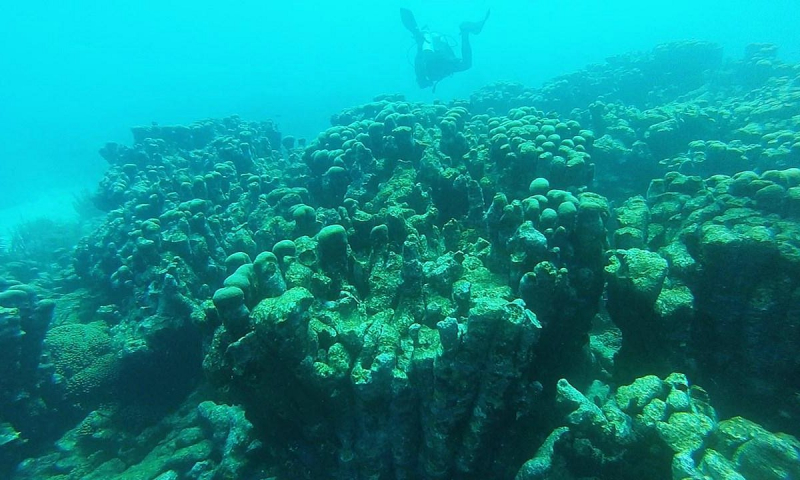
Photo: Tripadvisor Video: Bert Peters -
The SS Pedernales was a World War II and postwar lake tanker. She sailed under the British flag and was built in Monfalcone, Italy, in 1938. Pedernales was severely destroyed by a torpedo assault while anchored at Aruba on February 16, 1942.
The damaged ship was dismantled into three halves. The ship was rebuilt in Baltimore, Maryland, after the fore and aft pieces were linked together. Following being used as a target by Dutch gunners for a period of years after the war, the middle section was left in Aruba and has since become a scuba diving hotspot. In 1959, the tanker's reconstructed section, renamed Esso Pedernales and Katendrecht, was dismantled.
The SS Pedernales is a popular diving wreck off Aruba's west coast, it is considered one of the most famous historical sites in Aruba. It is located in calm water at a depth of no more than 10 meters. The Pedernales are therefore excellent for divers of all levels. This place is also ideal for scuba diving training and underwater photography. During World War II, the SS Pedernales was torpedoed by a German submarine. The ship was then relocated for further overhaul after the undamaged front and back were welded together. The center section is currently a diving wreck.
Website: http://palmbeachdiversaruba.com
Location: Noord Aruba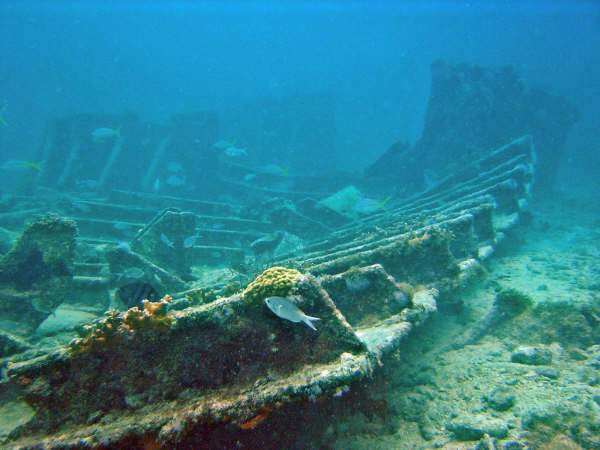
Photo: Lago Colony Video: Kara Cook -
This abandoned mill in Aruba's northern region alludes to the island's little-known gold rush. Gold was first discovered in 1824 and was a major Aruban industry until roughly 1916, when the island produced more than 3 million pounds. Aruba's name, which loosely translates to "there was gold," reflects the rich metal. Windswept stone ruins exist in the center of a vast expanse of undeveloped land at this historic site.
Bushiribana was carved into the island's rocks to process gold from its ore, which was brought by donkey from the island's mines. The early morning sun bathes these antique remains, making them even more captivating. Hundreds of meticulously placed wishing rocks line the beach across from the ruins, and you might be encouraged to add one of your own.Bushiribana Gold Mill Ruins, on Aruba's northern coast, are a relic of the 19th-century gold rush. The 1874 facility is powered by strong winds from the Caribbean Sea, and the decaying mill is now a popular stop on local jeep trips crossing coastal dirt roads. The spectacular sea and sand backdrop makes it a beautiful place to walk and take in the view. Make a wish while stacking local stones on the beach, as is customary.
Website: http://www.aruba.com/things-to-do/historic-gold-mines
Location: H23F+C9F, Noord, Aruba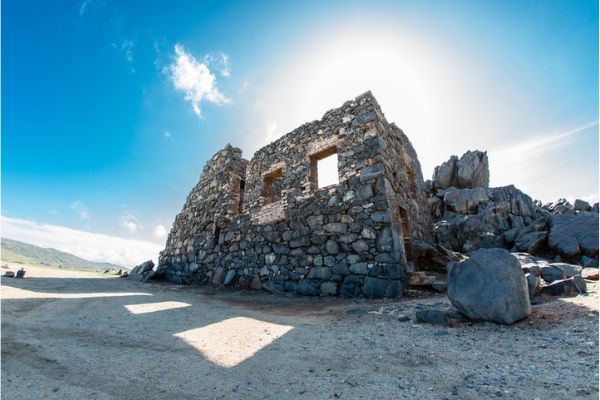
Photo: Aruba.com Video: Jakukaful -
The classic Old Dutch Windmill is a historic reminder of Aruba's Dutch heritage and one of the most authentic sights. Since 1962, when it initially opened, this beautiful point of interest in Aruba has housed various restaurants, taverns, and bars.
The Old Dutch Windmill, also known as "De Oude Molen" in Dutch, was built in 1804 in the Dutch province of Friesland, in the north of the country. The windmill was originally built to drain water from Holland's lowlands, but it eventually became a wind-powered grain mill. Several storms in the early 1900s, however, severely damaged the windmill, causing it to stop working. The windmill was decommissioned. The Old Dutch Windmill was purchased privately in 1960, disassembled, and moved to Aruba. It was carefully reconstructed after an international voyage of approximately 5000 miles to serve as one of Aruba's first important tourist attractions.
The Old Dutch Windmill sits near the Butterfly Farm and the Bubali Bird Sanctuary, near Palm Beach's high-rise hotels. It is a subject of attraction because of its distinctive appearance, and it serves as a signpost that you cannot miss when you are in the area. It is definitely worth a visit!
Location: J.E. Irausquin Blvd 370, Noord, Aruba
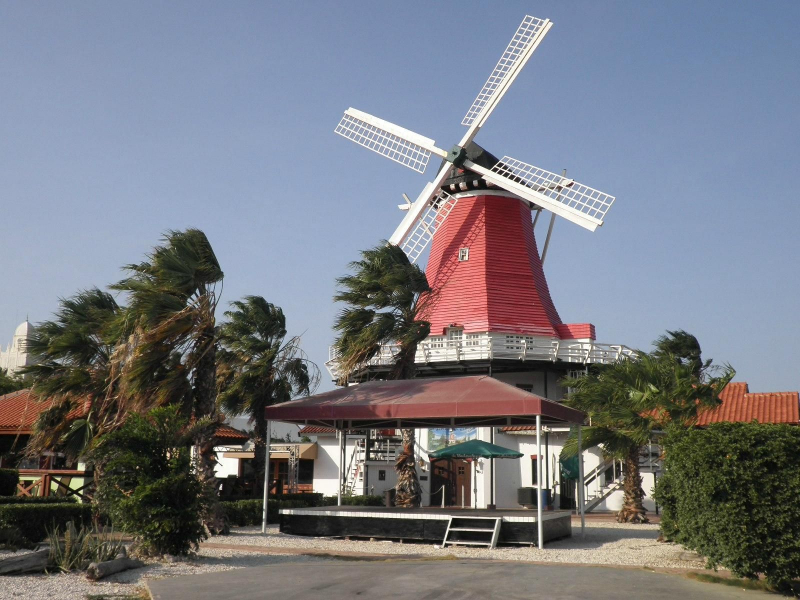
Photo: Pinterest Video: Let’s go with Hyro -
Visit the California Lighthouse and Sasariwichi Dunes, one of the most famous historical sites in Aruba, for a taste of local history and some of the island's best views. The stone lighthouse, named after an ill-fated ship that sank off the coast in 1891, offers visitors unimpeded views of sandy beaches and surrounding golf courses. Dune surfing is available in the vicinity, and a nearby café ensures that no one goes hungry or thirsty. You can view a gigantic orange sun softly falling into the water if you visit in the early evening.
Hudishibana's Sasariwichi Dunes, near the California Lighthouse, are famed for the offshore wreck of the legendary ship 'California.' Is the island's most remote northern tip, with ex-pats and dunes nestled in the view of an antique stone lighthouse and a stunning rock-hewn shoreline.
Snow white expanses of powdered soft sand, an oasis of calm along the craggy north shore, provide an escape from the masses. Aruba's desert-like surrounds, with its signature pictures of cacti and aloe, are characterized by subtle textures and mild tones of green and brown that comprise the environment. Visitors to the northeast shore are typically intrigued by the unexpected sight of enormous dunes. Please assist us in keeping these dunes clean and immaculate. The dunes are not accessible by car, however they can be explored on foot.
Website: http://www.aruba.com/things-to-do/california-lighthouse
Location: Hudishibana 2, Noord, Aruba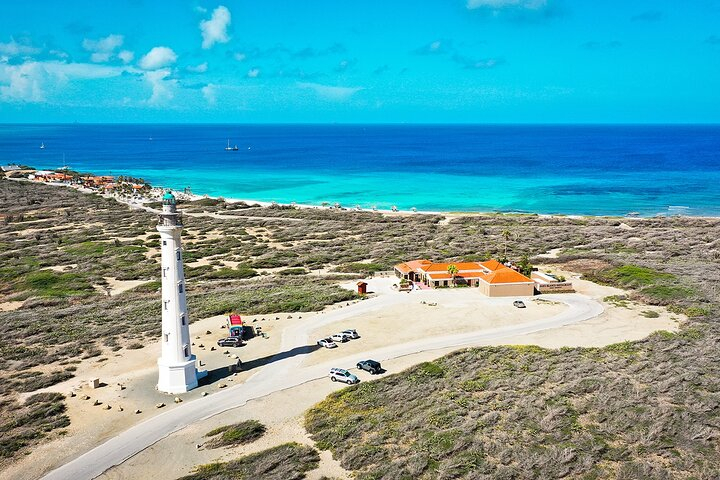
Photo: www.overtheplanet.com Video: Hey, where you at? -
Once entering Fort Zoutman, you'll undoubtedly sense history oozing through the walls while admiring the rich collection of documents and historical developments. Many of our visitors are first introduced to Aruba's history at the Fort Zoutman Historical Museum. Every Tuesday night from 6:30 – 8:30 p.m., everyone is invited to Fort Zoutman for our island's Welcome Party, also known as the Bon Bini Festival, which celebrates the island's culture and history.
After a two-year building period, the fort was named after Dutch Rear Admiral Johan Arnold Zoutman, who never set foot on Aruba yet fought the English in the North Sea.
The Historic Museum of Aruba, or Museo Historico Aruba, is located in Oranjestad's military bastion of Fort Zoutman. The fort was built in 1798, and the Willem III Tower, which now serves as a museum, was finished between late 1974 and 1980. A visit to the museum will provide you with insight into Aruba's history and growth around the turn of the century. Visitors come to the museum to see the Bon Bini Festival, which takes place every Tuesday at the fort between 7:00 and 8:30 p.m. Between 1913 and 1915, the fort and the tower were repaired and refurbished.
Location: Zoutmanstraat Oranjestad, Aruba
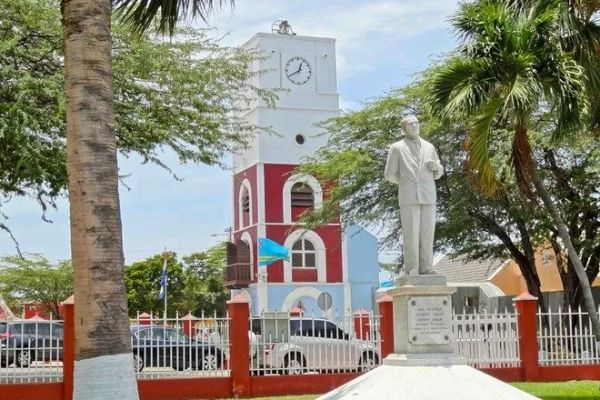
Photo: 10Best 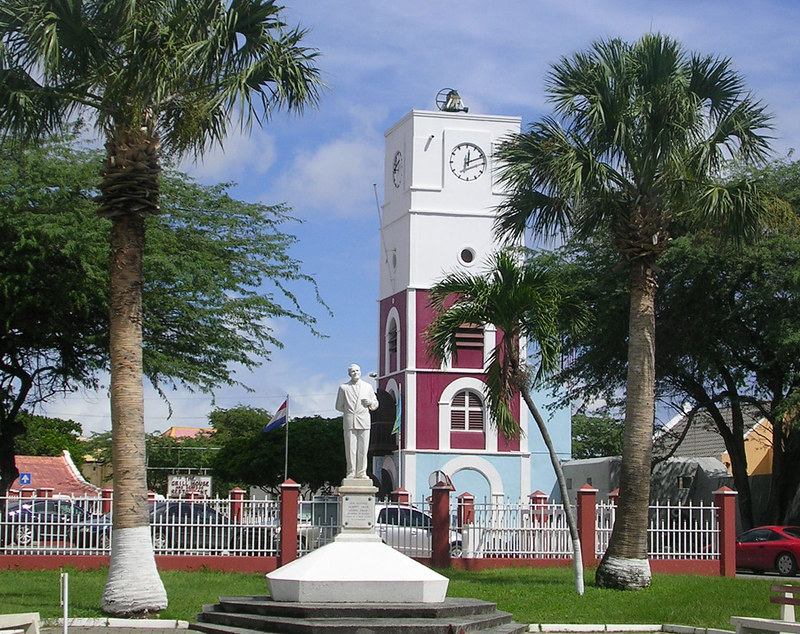
Photo: Flickr









